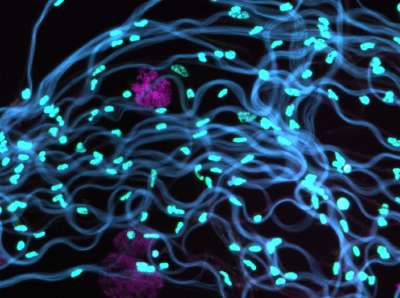How can a selfish chromosome escape genome-wide meiotic drive?

SémIdeev
21/03/2025
12:00:00
Marion Herbette, University of Edinburgh
IDEEV - Salle Rosalind Franklin
Abstract: B chromosomes are supernumerary, non-essential chromosomes that persist in populations by gaining a transmission advantage through diverse, species-specific cellular mechanisms. In this study, we investigate their behaviour in the mealybug Pseudococcus viburni, which exhibits an unusual reproductive system known as paternal genome elimination (PGE). In PGE, males selectively recognize, silence, and eliminate the paternally inherited chromosome set during meiosis, ensuring that only maternally derived chromosomes are transmitted to the offspring. Remarkably, in P. viburni, “selfish” B chromosomes have evolved a strategy to escape paternal genome elimination, allowing them to be transmitted regardless of parental origin. We hypothesized that B chromosomes avoid exclusion by modifying their chromatin state to mimic that of maternal chromosomes. Our findings reveal distinct chromatin profiles between maternal and paternal chromosomes, marked by euchromatic histone modifications on maternal chromosomes and heterochromatic modifications on paternal chromosomes. Crucially, we identified key histone modifications that coincide with chromatin remodelling of the B chromosome, facilitating its repositioning and segregation with the maternal set during meiosis.